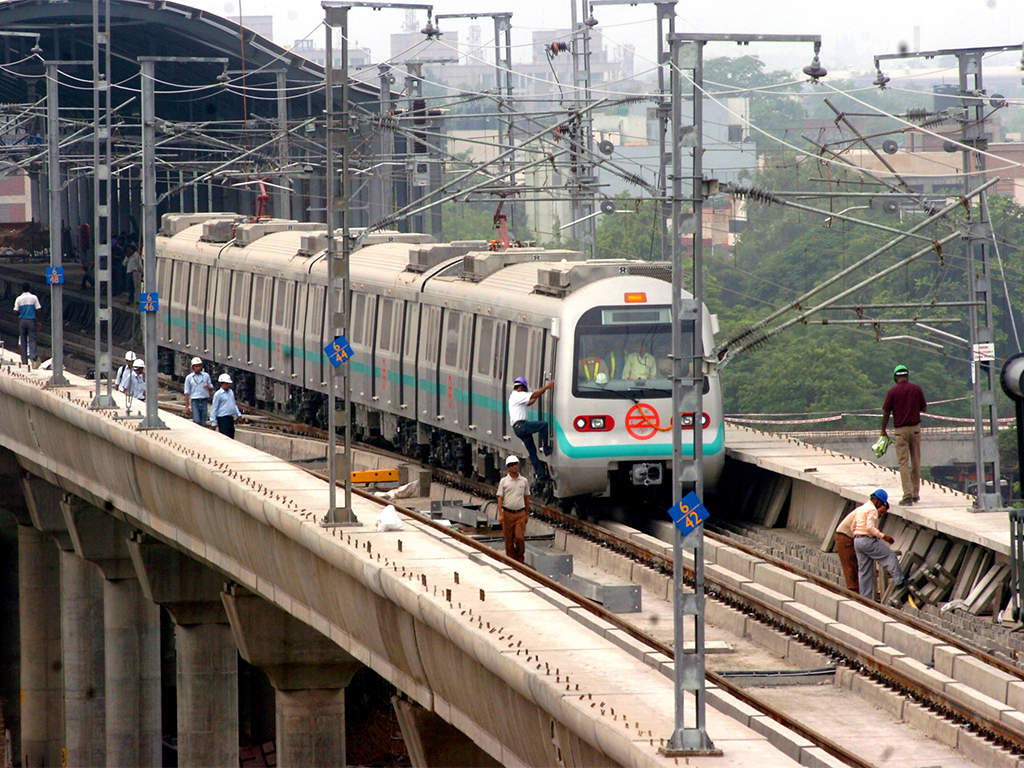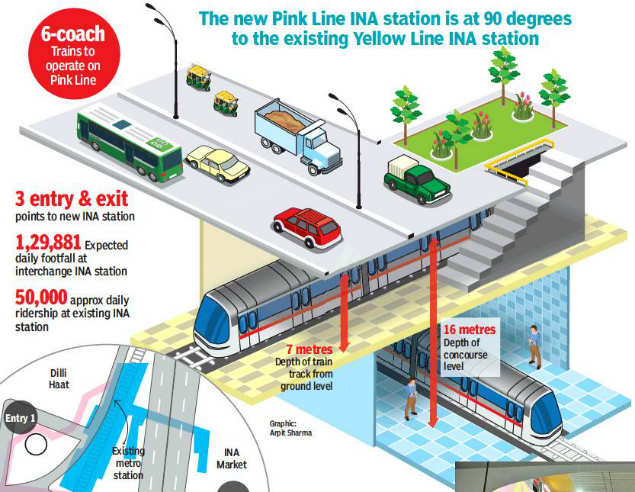
And when the Pink Line expands to Mayur Vihar, expectedly by September, Gurgaon will come closer to many south Delhi areas that don’t currently have metro connectivity.

INA station will be unique for having the new platform of the Pink Line (Majlis Park-Shiv Vihar) above the concourse level, a first in the rail network’s construction history, pointed out Delhi Metro Rail Corporation (DMRC) spokesperson Anuj Dayal. “The best part for commuters boarding the Pink Line at this station will be the couple of minutes it will take to get into a train because the escalators and lifts will lead directly from the ground level to the platform,” Dayal added. Unlike at other stations, ticketing at two of the main entry points — on Aurobindo Marg and at Dilli Haat - will be at ground level.
The reason why there is no ‘full concourse’ at the Pink Line INA station is because it had to be built above the existing tunnel of the Yellow Line (Samaypur Badli-HUDA City Centre) and there wasn’t enough space available. The new station lies at 90 degrees to the existing station.
“It is for the first time that a station was built over the existing tunnel connecting the functioning INA and AIIMS stations,” Dayal said. “Also, probably for the first time in India, we resorted to cut-and-cover construction over the existing operational tunnel, so there is one point where trains of both the lines and the concourses will operate on top of each other.”
Dayal added, “This was done here because of the height variation between the existing INA station and the upcoming new INA station owing to the already existing Metro tunnel at the location. DMRC had to modify the station design to adjust to the new circumstances.”
Passengers who want to change from the new INA station to the old INA station will have to go down one level from the platform of the new station to the concourse level for further access to the concourse of the old INA station. Dayal assured, “There will be proper signage to guide commuters.”
The construction of the station over an existing tunnel was a big engineering challenge for DMRC. “We had to ensure that constant pressure was maintained on the existing tunnel, in the absence of which it would have got damaged,” a DMRC official revealed. “That is why the construction work was divided into six compartments and work went on in two compartments at a time.”
On the ground level, DMRC is also creating a green area that will serve as a plaza where commuters can relax. The top of a skylight above the interchange area is also being developed as an incline so as to allow a view of the areas surrounding the station.
Source- ET Realty
No comments:
Post a Comment